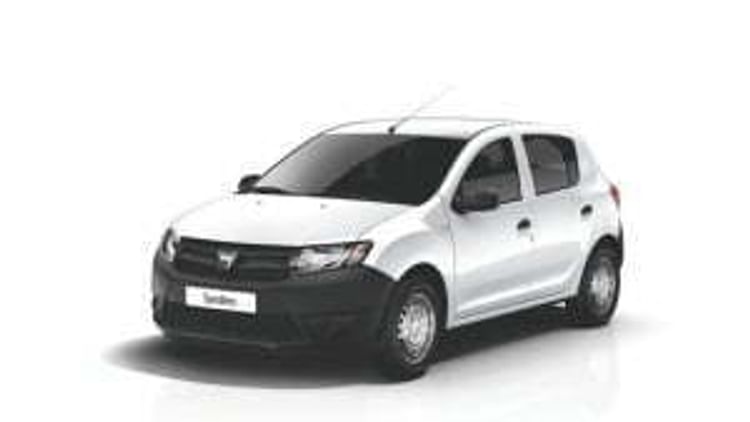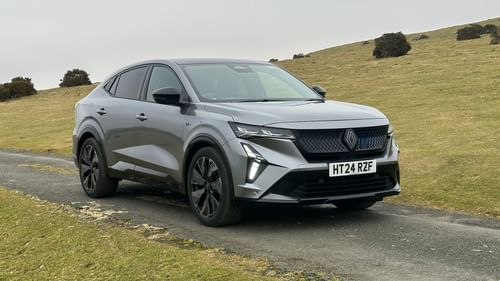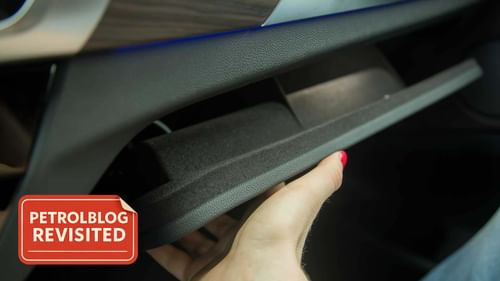The Dacia revolution

Today, Dacia announced the price of the Sandero and in doing so, created a bit of a stir. At £5,995 for the entry level model, it's hard to see just how Dacia, part of the Renault group, will actually make any money. But leaving that to one side for the moment, I reckon that Dacia is going to make quite an impact in the UK. If nothing else, the aggressive pricing strategy will certainly be ruffling a few feathers in the automotive sector.
Dacia's arrival bears more than a passing resemblance to that of Proton in 1989. By adopting an unashamedly ‘pile ‘em high, sell ‘em cheap’ pricing strategy and rolling out finance and warranty incentives, Proton managed to grab a sizeable foothold on the UK market. By the early ‘90s they were one of the fastest growing manufacturers in the UK and at one point had more dealers than Citroën. In 1991, Proton received the award for What Car? Best Value Car of the Year, followed a year later by the Auto Express Best Value Popular New Car. The reason for Proton's success was simple. The UK was in the grip of recession and Proton offered a cheap and cheerful way of getting behind the wheel of a new car. Who wouldn't be tempted by 0% finance, long warranties and proven Mitsubishi technology?
Dacia arrives in the UK under similar circumstances and could even be beter placed than Proton in the early ‘90s. Consider the facts.
 The Dacia brand has been dormant in the UK since 1990 with the passing of the original Duster and the Denem some years earlier. But to the majority of people in the UK, the brand may as well be extinct. Which could ordinarily cause quite a problem for a new brand trying to break into a new market. Especially for a brand from that automotive powerhouse, Romania.
The Dacia brand has been dormant in the UK since 1990 with the passing of the original Duster and the Denem some years earlier. But to the majority of people in the UK, the brand may as well be extinct. Which could ordinarily cause quite a problem for a new brand trying to break into a new market. Especially for a brand from that automotive powerhouse, Romania.
But the task of raising awareness of the Dacia brand has, to a certain extent at least, been made easier by the old chaps on Top Gear. The simple act of sending a Sandero press pack to Top Gear was either the work of genius or a pure fluke, but the fact remains, it ensured the Dacia name made it into the homes of five million viewers every Sunday night. Not to menton the countless repeats on Dave and the use of an actual Sandero during the Romanian road trip special. The result? Instant awareness of Dacia and half the job done. Good news! (with apologies to James May).
Then there's the economic climate. Britain is once again in the the midst of recession and consumers are tightening their belts. Retailers such as Aldi and Lidl continue to thrive, with as many as one in three of us choosing to shop in one of the discounters this year (source: Telegraph, June 2012). So a car brand that promises cheap prices and attractive offers is going to grab people's attention.
Which bring into play the fact that for the past decade, the traditional value brands have been chasing the premium dream. Kia and Hyundai continue to strive for upmarket acceptance and it's as though playing the value card is considered to be too dirty and direct. The ‘buy now, pay whenever you like‘ mentality has created a false sense of opulence amongst car buyers and it has left a gaping big chasm as the bottom end of the market. Dacia can fill this void with ease.
Then there's the support from Renault, which cannot be underestimated. We've already seen the full page ads for the Duster in the Sunday papers and I suspect that the Sandero will receive similar levels of exposure. Dacia will also benefit from the new engines I tested last week in the new Renault Clio. The 3-cylinder petrol is characterful and frugal and the 1.5 dCi is economical and refined. Both winning formulas.
 At it stands, it's hard to see where Dacia can go wrong. The Duster's almost unanimous critical acclaim is now translating into awards and the chatter surrounding the Sandero would rival that of a new supercar. As long as Dacia stays true to its principles and retains its unashamedly value-driven stance, I predict Dacia picking up quite a following. Perhaps the only note of caution comes in the press release where Dacia claims that ‘two thirds of buyers [will] plump for the top-of-the-range versions’. For me, once you start adding bits of trim and expensive options, the Sandero loses some of its unique appeal. At £7,995 for the 1.2 16v Lauréate version, it's still cheap, but it's no longer brilliantly cheap.
At it stands, it's hard to see where Dacia can go wrong. The Duster's almost unanimous critical acclaim is now translating into awards and the chatter surrounding the Sandero would rival that of a new supercar. As long as Dacia stays true to its principles and retains its unashamedly value-driven stance, I predict Dacia picking up quite a following. Perhaps the only note of caution comes in the press release where Dacia claims that ‘two thirds of buyers [will] plump for the top-of-the-range versions’. For me, once you start adding bits of trim and expensive options, the Sandero loses some of its unique appeal. At £7,995 for the 1.2 16v Lauréate version, it's still cheap, but it's no longer brilliantly cheap.
 For me there's only one Sandero of interest and it's the base spec, solid colour Glacier White on beautifully simple 15" Gobi steel wheels for just £5,995. There are next-to-no toys, meaning you'll need to wind the windows up and down yourself, unlock the doors using a key in a lock and manually adjust the door mirrors. You're not even treated to a light in the boot and your passenger will have to do without a vanity mirror in the sunvisor. How refreshing. It's just a shame that you can't have the 3-cylinder engine without upgrading to Ambiance trim.
For me there's only one Sandero of interest and it's the base spec, solid colour Glacier White on beautifully simple 15" Gobi steel wheels for just £5,995. There are next-to-no toys, meaning you'll need to wind the windows up and down yourself, unlock the doors using a key in a lock and manually adjust the door mirrors. You're not even treated to a light in the boot and your passenger will have to do without a vanity mirror in the sunvisor. How refreshing. It's just a shame that you can't have the 3-cylinder engine without upgrading to Ambiance trim.
 I'm yet to drive either the Duster or the Sandero, but from what I saw in Paris, the signs are extremely positive. The interiors feel robust and fit for purpose and I have every reason to believe the running gear will be equally as good. Heck, I even loved the utilitarian approach to the Dacia stand in Paris. Simple, bright and effective.
I'm yet to drive either the Duster or the Sandero, but from what I saw in Paris, the signs are extremely positive. The interiors feel robust and fit for purpose and I have every reason to believe the running gear will be equally as good. Heck, I even loved the utilitarian approach to the Dacia stand in Paris. Simple, bright and effective.
Much will depend on the reception the cars get when they're first shown to the general public. Will UK car buyers be prepared to economise on their new car in the same manner as their weekly grocery shopping? Time will tell, but don't be surprised if you see a number of white and black Sanderos appearing in car parks near you in 2013. Value-driven motoring is back and it's never seemed so exciting.
Bring on the Dacia revolution.





